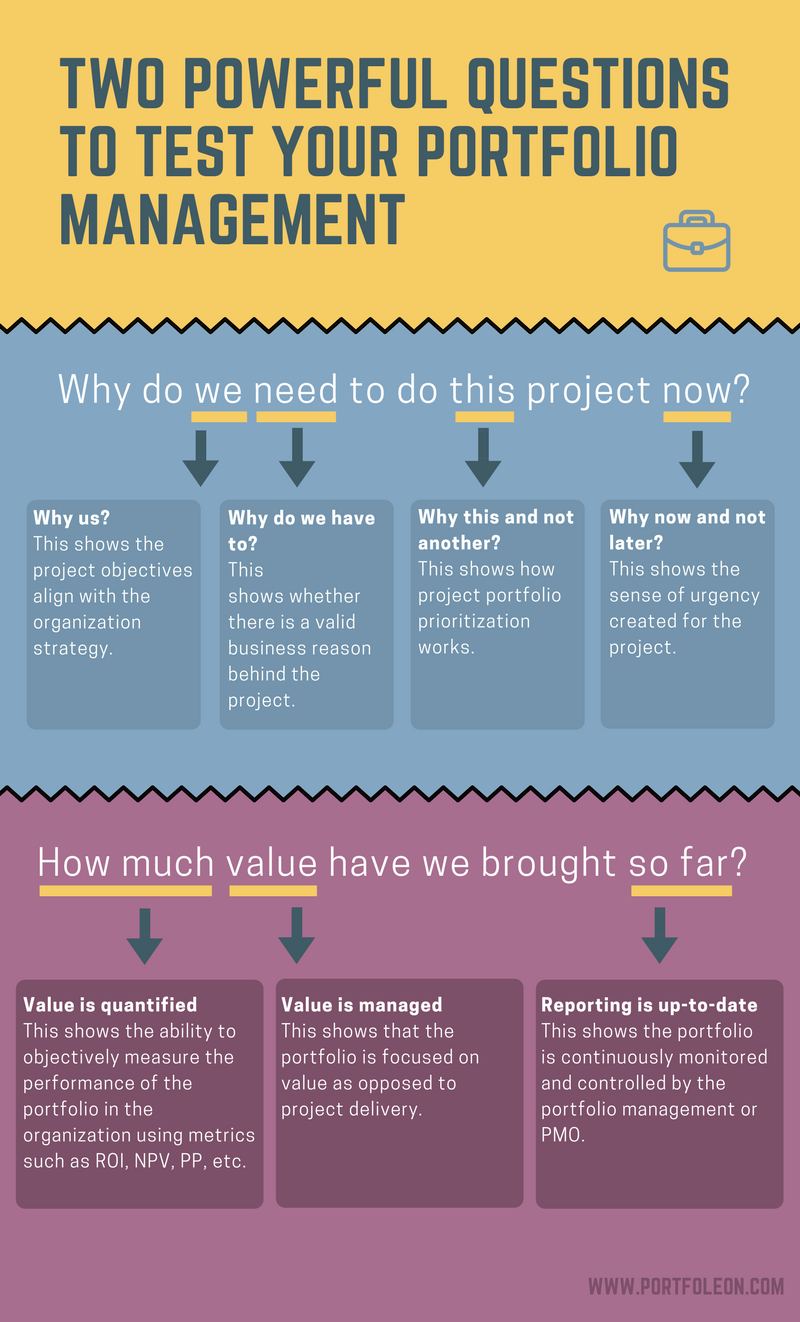How do you know if project portfolio management is working well in your organization?
I mean – you probably have many procedures and tools you use to manage your projects, you fill templates to collect all the right data, and you rank your projects with sophisticated scorecards, but at the end of the day – does the entire system work and bring value?
While you can use different standards and carefully audit your portfolio management system, you can get a lot of good information just by asking a few good questions.
Check if you can answer, with confidence, the following:
- Why do we need to do this project now?
- How much value have we brought so far?
If this does not seem a lot to you, read on to see why these questions are so powerful.
1. Why do we need to do this project now?
The answer may seem obvious – for example, you could say, “we are going to turn more profit if we make this project”.
However, this is not the complete answer to this question.
Yes, the project will bring us profit, but still, why do this project and another one? If you manage your project portfolio right, you have a system that allows you to select the best opportunity among all available and make the best use of your resources.
While your project may give a good return on investment, does it contribute to the strategy of the organization? Without strategic alignment of projects, the execution of the strategy of the organization will be impossible. In addition, the misaligned project is much more likely to fail or be canceled by senior management.
Before you can execute a project or even before that project makes it into the roadmap, it should be properly authorized. You should have a project authorization system, which will ensure the project has a slot in your roadmap and will receive necessary funding and resources. For example, in order to authorize a project to the portfolio, you may require a valid business case, or a technical feasibility study.
2. How much value have we brought so far?
This question will address performance measurement, monitoring, and control of the portfolio execution.
First, the question implies that you are managing the value that your project portfolio brings to the organization. In contrast to project management, which is primarily concerned with producing specific deliverables, portfolio management is more about bringing value and achieving benefits.
The performance of a portfolio is primarily defined regarding delivered value against the investment; this is why the value of your portfolio should be measurable and quantifiable.
Finally, do you continuously monitor how your portfolio performs? Business value is only one factor among many others that you should be monitoring, but without a doubt one of the most important. You should also keep track on the expenditures, risk level, standards compliance, etc.
Start simple
Portfolio management can be very complex, but this does not mean you must implement all the possible requirements of portfolio management standards, especially right from the start.
You can add a lot of value by doing simple things, such as establishing the complete project list or making your project selection and prioritization process and criteria clear and transparent for the organization.

